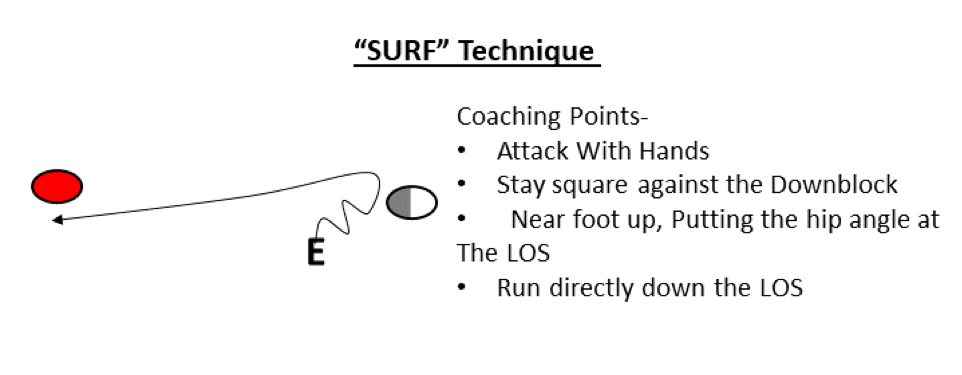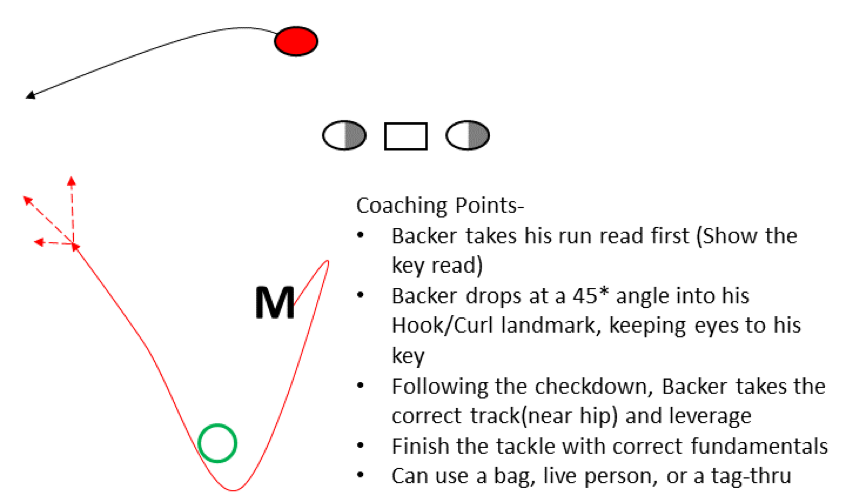Learn Georgia's "ABC's" of Defense

As coaches, we never get enough of the individual time that we need. We need to be able to build skills, teach schemes, give tools and refine techniques, among other things. The University of Georgia created a philosophy for barometers to ensure their coaches aren’t wasting the little time they start with. Bulldogs’ defensive coordinator Dan Lanning introduced the “ABCs” last year to great success.
A
Agility/Movement
Players have to be able to change direction within the white lines. It’s inevitable. This has been expounded in the modern age of offenses hunting for open grass. The ability to decelerate in a certain direction, to accelerate in another and find the ball is essential for defenders. This is a great area to add movement skills with techniques players need within your scheme, such as having your defensive ends use the “Surf” technique against a down block. Show the defender the down block that he will step down and stay square against. Then have him open his hips to the sideline, change direction and sprint down the line of scrimmage.
RELATED CONTENT: Refresh of an old drill - Notre Dame College
Movement drills are great to get players’ blood pumping while still teaching a skill or technique they will need for game situations.
B
Block Destruction
At some point, no matter the position/scheme/play, every defender will have to dismantle a block. If the offense practices how to block every day, shouldn’t we practice eliminating blocks every day as well? The second must-have for daily individual drills is to teach and practice a variation of block shedding every day. It could be as simple as this twitter video from Dominique Bowman (@Dbowman85), the co-defensive coordinator at Austin Peay State (Tenn.).
Block Destruction 🔥🔥🔥
— Coach Bowman (@Dbowman85) April 23, 2019
Here at Peay we take pride in getting off Blocks. It’s important to work diffent types of block destruction. Stationary and moving!
Violent hands ✅
Frame square not crossing over ✅
Punching with good posture no lunging ✅
Violently release ✅ pic.twitter.com/h5yQI3O37D
Here, all the players line up across a white line, face-to-face. On first whistle, they strike the blocker. On the second whistle, they disengage and beat the block. This results in efficient, fast-paced reps. The chances of intricacies improving go up when we as coaches see our players complete a mass of repetitions. As the season progresses and the skill develops, you can add a movement within this drill.
RELATED CONTENT: Creative uses of the Power scheme
C
Contact (Tackling)
All of those movement skills, techniques, schemes, blitzes and coverages don’t matter if we can’t bring the guy to the ground and end downs. Therefore, Georgia places a high priority on “C” of their individual principles. We as coaches need to get our players as many repetitions as possible when it comes to tackling (for proficiency and safety) and a daily tackling circuit simply is not enough to satisfy this skill. Adding this component to your individual period makes sense and can be done in a myriad of ways. An advanced drill would be an inside linebacker zone-dropping into leverage tackling.
The linebacker takes a run read then drops into a pass zone with correct depth. The ball is thrown to a “rabbit”, where the inside backer will have to change direction, track the near hip of the ball carrier and fit the tackle with correct leverage. Obviously, these cover all three of the ABC principles for individual drills.
The biggest takeaway from coach Kirby Smart and defensive coordinator Dan Lanning discussing their individual segments was that every drill ideally hits two of the three ABCs. Once the base skills are built, the drills start to look more fluid and game-like to help teach players the tools for success. Whether it be disengaging a block to make a tackle or movement following shedding a block, doing so overlaps teaching and creates an efficient way to improve our athletes, which is what we’re all trying to achieve.
USA FOOTBALL CONTACT SYSTEM
NEW LESSONS AND VIDEOS AVAILABLE
Arm yourself or your entire coaching staff with the most effective and sophisticated systematic approach for blocking and defeating blocks, with material for both line and skill position coaches.
